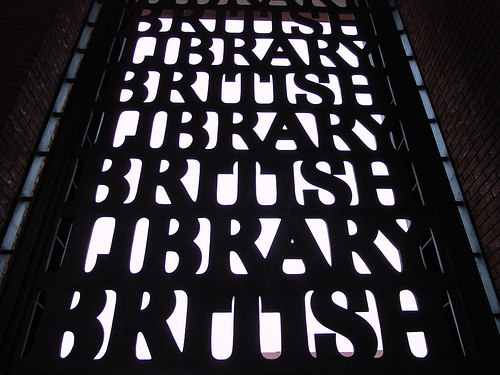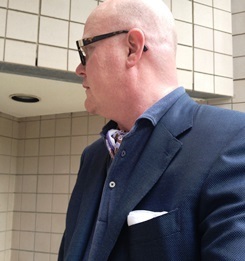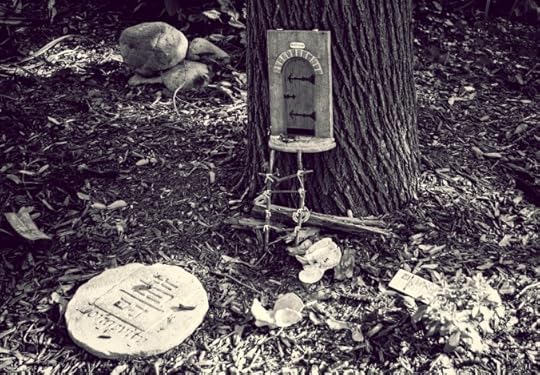Jay Sennett's Blog, page 13
January 13, 2015
Racial Sadist or Father of American Gynecology
Can we not live with paradox? My research of Dr. Marion J. Sims, discoverer of the first successful method of vesico-vaginal fistula repair and, at least in this point in my research, a doctor who experiments on women without the legal right to consent suggests torturer, finds an either/or dichotomy. “Father of American Gynecology/Racial Sadist.”
Why not both?
I desire to understand my historical responsibilities as a white american who has benefitd from Sims research. Countless women, including Ethiopian women at the XX Fistula Hospital, continue to benefit from the results of his medical experiments (torture) in the 21st century. White people in America have a tendency to partake of our history ala carte. I refuse to let us off the hook.
If our Constitution, Revolutionary War and (pick your historical event) make us white Americans, then so does slavery and Reconstruction Jim Crow and segregation. Our founding fathers, after all, encoded slavery into our constitution. With karma at work, we don’t get away with anything.
But back to why not both? If not, Why not?
I can condemn his actions but the consequences of his actions are far more difficult for me. His actions inflicted suffering on women unable to consent to his experiments. In the case of Anarcha, she survived, and he did heal her vesico-vaginal fistula.
If I discount the consequences, I feel I deny Anarcha and the other woman who suffered, as well as the healing women have found through the results of his experiments.
Thinking through this history causes me to struggle.
January 12, 2015
Read Better, Write Better
 For the rare writer who asks “how do I become better?” I believe reading difficult books, harder than we are used to, can make us better writers.
For the rare writer who asks “how do I become better?” I believe reading difficult books, harder than we are used to, can make us better writers.
Over the last year, I’ve had the opportunity to critique works by other writers and to have them critique my work. Now, critiquing work requires a gift I’m not sure I have, except to say that I’m learning to critique what is on the page, not what I wish was one the page. That realization is for another day.
What I want to share today is a recent observation I made. The quality of a person’s writing, I have observed, relates to the quality of their reading. The best feedback I received was from writers who wrote with a strong voice and well. While I’d like to think I could read Nancy Drew and Encyclopedia Brown for the rest of my days, I cannot if I want to see my work published in the likes of AGNI or Brevity or if I fancy winning the Pulitzer (a perfectly laudable goal, I think). I must read harder and harder works to become a better writer.
I continually write myself into a corner. Huddling there, confused and deflated, I realize my vision has exceed my capability as a writer. This is simply another way to say I need to learn new tools. To write myself out of the corner, perhaps I need to learn how to write in the second person or how to use found material or newspaper headlines or how diction changes the voice of a character. With these new tools, I’ve solved a writing problem. Whether they stay in the final draft is less important than I have found a method to express what is inside of me.
Thus to get better as a writer, I’ve had to get better as reader. I’m quite slow as a reader and miss common cultural references. But thankfully there is the interwebz, and I refer to it often when reading.
This past year, Tom McCarthy’s Remainder and the 42nd Parallel by John Dos Passos have provided tools I needed to put the right words on the page in the right way at exactly the right time.
The act of doing this is something akin to having an itch scratched. How many of us have written a scene or chapter or entire essay, typed the last period or question mark or exclamation point, all the while knowing that we’ve not quite said what we want to say?
Reading better helps us become more exact, gain confidence in our writing and increase our chances of landing a plum publishing contract.
How has reading improved your writing?
September 6, 2014
The Dictionary of Obscure Sorrows
A brilliant concept, well-executed. Sonder moved me to tears. The Dictionary of Obscure Sorrows haunts like Moby-Dick.
June 7, 2014
Open City, by Teju Cole
A densely written novel with little action but tremendous awareness of one human being’s self-understanding or lack thereof. A devotion to art and music cannot overcome the narrator’s indifference to others. The book destroyed a tenet of mine: that a life devoted to the arts makes us more compassionate and self-aware. Not always so.
The narrator can speak eloquently about the open city but cannot speak to his own savage behavior. A great mirror to the uneven nature of political awareness, personal commitment and the lure of incredible moral forgetting that we can make of art.
Things don’t go away just because you choose to forget them.
Teju Cole has written an astonishing, haunting book. Read it, and his twitter feed, too. He won’t disappoint y0u.
February 18, 2014
The Forever Internet and Our Digital Identities
 Then the internet was new. In the blush of coming out, I’m sure I posted regrettable material back in 1996 when I got my AOL account. And I had no idea about the waybackmachine. Facial recognition software was material for sci-fi novels. Now Facebook makes all but our birthdays and contact information available on the internet. Now I’ve come to the realization the internet is forever. What I post in an instant may very well live long after my mortal body returns to the earth and air. Academic Juan Enriquez believes Andy Warhol had it wrong: In the future, everyone will have only 15 minutes of anonymity. I recently wrote an article for Gentleman’s Gazette about digital etiquette. There I made the point that…
Then the internet was new. In the blush of coming out, I’m sure I posted regrettable material back in 1996 when I got my AOL account. And I had no idea about the waybackmachine. Facial recognition software was material for sci-fi novels. Now Facebook makes all but our birthdays and contact information available on the internet. Now I’ve come to the realization the internet is forever. What I post in an instant may very well live long after my mortal body returns to the earth and air. Academic Juan Enriquez believes Andy Warhol had it wrong: In the future, everyone will have only 15 minutes of anonymity. I recently wrote an article for Gentleman’s Gazette about digital etiquette. There I made the point that…
September 23, 2013
Limits and Having a Thing for the Blue Suit
 Having a Thing for the Blue Suit I have been obsessed with men’s clothing for as long as I can remember. The snazzy men’s clothing in the now defunct Montgomery Ward’s catalogues made my heart race. I recently purchased a catalogue from 1968. What with the DACRON(™) and other types of manufactured textiles combined with the horrible art direction, I should have left those memories in their nostalgic (for what, you might legitimately ask) memory holes. But I digress. My obsession has caused me to buy thousands upon thousands of dollars worth of clothing over the last twenty or so years. It doesn’t help that my body shape and muscle and fat distribution seemingly change faster than Michigan weather; but really, I could have…
Having a Thing for the Blue Suit I have been obsessed with men’s clothing for as long as I can remember. The snazzy men’s clothing in the now defunct Montgomery Ward’s catalogues made my heart race. I recently purchased a catalogue from 1968. What with the DACRON(™) and other types of manufactured textiles combined with the horrible art direction, I should have left those memories in their nostalgic (for what, you might legitimately ask) memory holes. But I digress. My obsession has caused me to buy thousands upon thousands of dollars worth of clothing over the last twenty or so years. It doesn’t help that my body shape and muscle and fat distribution seemingly change faster than Michigan weather; but really, I could have…
September 10, 2013
Where are Your Fairy Doors?
 Who Knew Whimsy Could Arrive in Middle Age? I’ve never been one for whimsy. So you can imagine what I might think about fairy doors, which are quite the rage here in Ann Arbor: tiny little doors placed in unexpected places representing too much indulgent sentimentality when the work is still far from over. My town of Ypsilanti, never interested in looking like they missed an Ann Arbor trend, has begun building fairy doorsamong the mature trees of Normal Park. On a whim I decided to photograph as many of the doors as I could last week. But, and this a very important, this would be a photography exercise only. As I wandered through the well-manicured streets of Normal Park, trying to find the right light in the dying sun, the tiny doors and…
Who Knew Whimsy Could Arrive in Middle Age? I’ve never been one for whimsy. So you can imagine what I might think about fairy doors, which are quite the rage here in Ann Arbor: tiny little doors placed in unexpected places representing too much indulgent sentimentality when the work is still far from over. My town of Ypsilanti, never interested in looking like they missed an Ann Arbor trend, has begun building fairy doorsamong the mature trees of Normal Park. On a whim I decided to photograph as many of the doors as I could last week. But, and this a very important, this would be a photography exercise only. As I wandered through the well-manicured streets of Normal Park, trying to find the right light in the dying sun, the tiny doors and…
September 3, 2013
What is Underneath Shame
 More Joy I had asked Ms. H., after reading the latest draft of my memoir, what more she might want. ”I think you need more joy.” Right. More joy. Even as I asked her, I knew what she would say. I, too, want to write about the joys of transitioning and living as a transsexual man. But when I imagine how the words will fit on the page, how I can best describe this joy, a part of me wants to say, “Just don’t fucking transition! It’s too hard.” Up close, there isn’t much joy. I seem to have constructed a transsexual narrative in which the whole thing is very hard and difficult and not anything I would ever recommend to anyone. Why did you…
More Joy I had asked Ms. H., after reading the latest draft of my memoir, what more she might want. ”I think you need more joy.” Right. More joy. Even as I asked her, I knew what she would say. I, too, want to write about the joys of transitioning and living as a transsexual man. But when I imagine how the words will fit on the page, how I can best describe this joy, a part of me wants to say, “Just don’t fucking transition! It’s too hard.” Up close, there isn’t much joy. I seem to have constructed a transsexual narrative in which the whole thing is very hard and difficult and not anything I would ever recommend to anyone. Why did you…
August 26, 2013
Ypsilanti: Fairy Doors of Normal Park
 I took myself on a flaneur to take photos of the whimsical fairy doors of Normal Park, Ypsilanti. Normal Park is one of the oldest remaining residential areas in Ypsilanti. The original settlement is long gone, buried under the asphalt of Interstate 94, though I’m sure those structures disappeared long before Eisenhower. The district is quiet, with mature trees and, in many instances, manicured lawns and well-thought out gardens. I love Normal Park, but don’t love the city’s taxes. I’m content to live in newer construction in the township. The photos above represent 2 of the 14 known fairy doors. I’ll add more photos over the next several days, as well as addresses. I’m thinking about adding a fairy door to our garden. I…
I took myself on a flaneur to take photos of the whimsical fairy doors of Normal Park, Ypsilanti. Normal Park is one of the oldest remaining residential areas in Ypsilanti. The original settlement is long gone, buried under the asphalt of Interstate 94, though I’m sure those structures disappeared long before Eisenhower. The district is quiet, with mature trees and, in many instances, manicured lawns and well-thought out gardens. I love Normal Park, but don’t love the city’s taxes. I’m content to live in newer construction in the township. The photos above represent 2 of the 14 known fairy doors. I’ll add more photos over the next several days, as well as addresses. I’m thinking about adding a fairy door to our garden. I…



